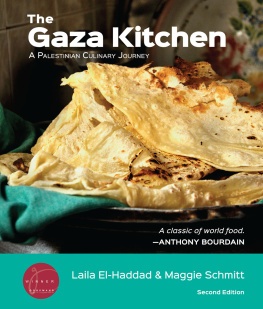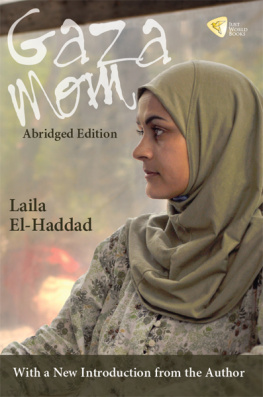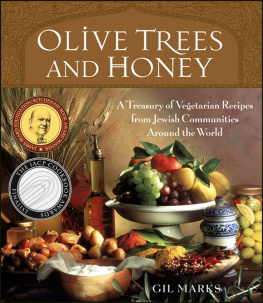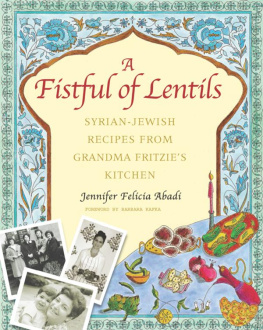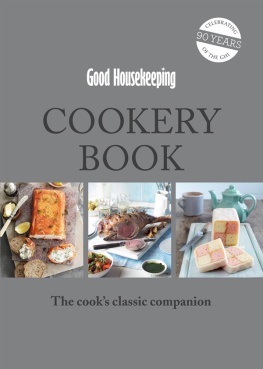
Praise for The Gaza Kitchen, Second Edition
This book becomes more essential with every passing day. Not just a superb cookbook, a collection of vital recipes from a delicious yet often overlooked cuisine, but an argument for understanding. A classic of world food.
ANTHONY BOURDAIN
It is a delight to be returning to this booka real classicin its second edition. The recipes and stories are magically woven together, inspiring to read, to cook, and to eat. Telling us about the food of Gaza is key to understanding the peoples way of life, and this is what Laila and Maggie do so fantastically well.
YOTAM OTTOLENGHI and SAMI TAMIMI
co-authors of Jerusalem: A Cookbook
The best cookbooks inspire you to be a better chef. This one can make you a better person. Laila El-Haddad and Maggie Schmitt guide readers through the rich, subtle and complex flavours, history and politics of the Jews, Christians, and Muslims of the Levant. Even if you never make any of these recipesand youd be depriving yourself of sublime taste if you didntyour palate will grow through this excellent book. Part anthropology, part history, part politics, part biography, part geography, and always passionately intelligent, this is gastronomic writing at its finest.
RAJ PATEL
author of Stuffed and Starved: The Hidden Battle for the World Food System
The Gaza Kitchen cookbook is a vital attempt to safeguard a rich culinary heritage that has existed in the Middle East for thousands of years. In documenting Palestinian recipes and food culture, despite the ravages of war, Laila El-Haddad and Maggie Schmitt have significantly succeeded in sharing their culinary travels while bringing dignity and pride to those who continue cooking traditional meals at home in Palestine. This book is an asset to those living in Gaza and to the rest of the world who would like to participate in protecting this rich cuisine.
BARBARA MASSAAD
Lebanese author and photographer of the award-winning cookbooks Manoush, Mouneh, Mezze, and Soup for Syria
Intriguing, homely, and delicious, the recipes are familiar as broadly Middle Eastern but they are distinctively Palestinian and many also uniquely of Gazawith more pronounced flavours, more herby, spicy, peppery, lemony, than those of their regional neighbours. We also get from this very special book a rare insight into the intimate everyday lives of engaging people who grow vegetables and herbs and raise pigeons and rabbits on their rooftops even as they lament their predicament.
CLAUDIA RODEN
author of more than a dozen books on Mediterranean cuisine

Just World Books is an imprint of Just World Publishing, LLC.
Copyright 2016 Laila El-Haddad & Maggie Schmitt
Foreword copyright 2016 Nancy Harmon Jenkins
All rights reserved. No part of this book, except brief passages for review purposes, may be reproduced or transmitted in any form or by any means, electronic or mechanical, including photocopying, recording, or exporting from any information storage system, without permission in writing from the publisher. Such permission may be requested via the email or physical address listed at www.justworldbooks.com/contact.
Interior design and typesetting by Diana Ghazzawi for Just World Publishing, LLC.
Cover photo by Maggie Schmitt.
Photo on courtesy of Library of Congress #LC-DIG-matpc-11349.
Map on courtesy of Linda Quiquivix.
Publishers Cataloging in Publication
El-Haddad, Laila M., author.
The Gaza kitchen : a Palestinian culinary journey / Laila El-Haddad & Maggie Schmitt; foreword by Nancy Harmon Jenkins. -- Second edition.
pages cm
Includes index.
LCCN 2016942730
ISBN 978-1-68257-008-1
1. Cooking, Palestinian Arab. 2. Cooking--Gaza Strip. 3. Palestinian Arabs--Social life and customs. 4. Cookbooks. I. Schmitt, Maggie, author. II. Title. III. Title: Palestinian culinary journey.
TX725.M628E44 2016 | 641.5929274 QBI16-600092 |

Contents

Foreword
by Nancy Harmon Jenkins
A book about Gaza cuisine? Some cooks might be forgiven for thinking the concept is something of an oxymoron. After all, we know Gaza, dont we? That tiny, troubled sliver of the southeastern Mediterranean, the focus of seemingly unending struggle, uniquely both victim and perpetrator, injured and injurer, where bombs and rockets, stones and bitter invective, are hurled back and forth across the border with Israel and occasionally too with neighboring Egypt. Who could care about food in a context so contentious? Isnt that the very definition of frivolity?
Well, as it turns out, its not. Not when the food is as delicious and exciting as this remarkable book revealsfrom basic preparations like spicy meat broth and tahina sauce that are foundations for many other dishes, to lusciously buttery, citrusy, nutty pastries to end the mealthis is a cuisine of compelling flavors, substantial dishes, of traditions handed down from cook to cook over the generations. Gaza was an important station on the spice route, a link between southern Arabia and the Mediterranean, and spices from lands to the east continue to shape the cuisine to this day. At the same time, this patch of territory is also a repository of traditional foods and dishes from all over historic Palestine, a living legacy of the refugees who flocked here, driven from their homes in the north and the east.
If you believe, as I do, and as Laila El-Haddad and Maggie Schmitt so obviously do, that foodgrowing it, preparing it, sharing it with friends, family, and strangersis a vital cultural marker, one of the most significant ways we have to identify ourselves as members of our own tribe and of the great tribe of humanityif you believe that, then you will recognize that The Gaza Kitchen is not just a recipe book but a significant look at the people of this tiny corner of the world. Food, after all, is one of the most telling ways the people of Gaza have to say, to themselves and to their families, yes, this is who we are: Eat this because you are Palestinian, eat this in order to become more fully Palestinian, eat this to celebrate the memory of who and what we are. And what they eat in Gaza is delicious, even when, as so often, it is as basic as can belike a traditional potato salad, sparked with chopped chilis and enriched with that very great Gaza specialty, red tahina made from dry-roasted sesame seeds, full of nutty fragrance.
It has to be understood that Gaza isnt just a narrow band of coastline with an unfortunate modern namethe Gaza Strip, as if it were merely the edge of some hapless suburban shopping mall. Gaza is also an integral part of Palestine, separated now from the other Palestine, the West Bank, by Israels convoluted and unpredictable border controls. Todays Gaza, a mere 25 miles long and no more than 5 miles wide at its greatest point, is all that remains of what was historically, under the British Mandate, a much larger territory. In this place now nearly 2 million Palestinians are squeezed together, most of them refugees, or descendants of refugees, both from the original, much more extensive Gaza District, as well as from other parts of Palestine. All these historic aromas and flavors, then, have been absorbed into Gazas own traditions to create a new and vibrant cuisine.
Next page
